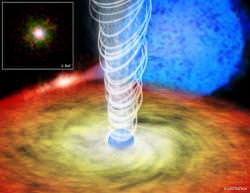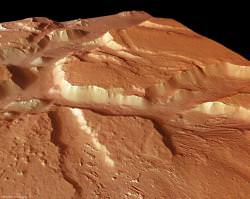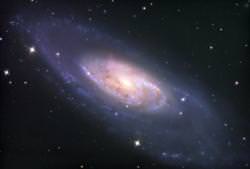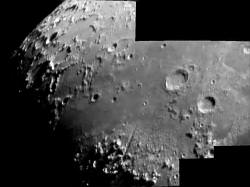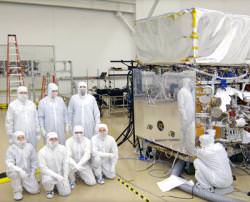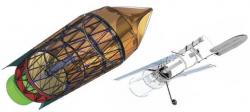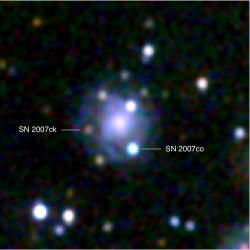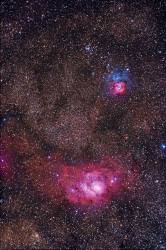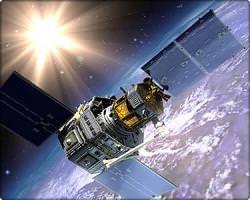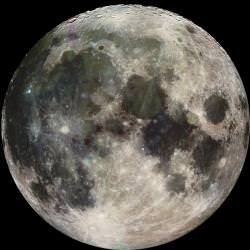One time, astronomers thought that only black holes had jets of material pouring out of them. Something to do with the event horizon, and a lack of a solid surface. Well, step aside black holes, neutron stars seem to have them too.
This is according to new images captured by NASA’s Chandra X-Ray Observatory, which imaged a system called Circinus X-1. This is actually a binary system, consisting of a massive star with several times the mass of our Sun, and a neutron star. The neutron star is feeding on material from the star, and has gathered together an accretion disk around itself. It’s consuming so much material from the star that it backs up into this disk, which glows hot in the X-Ray spectrum.
And just like with a black hole, the centre of the accretion disk acts like an engine, firing material out into space along these jets. But the power from this engine comes from the neutron star.
In the Chandra image in the upper left, you can see what looks like cones on the two sides of the neutron star. This neutron star could be wobbling like a top, with the jets tracking out these larger arcs.
Original Source: Chandra News Release

